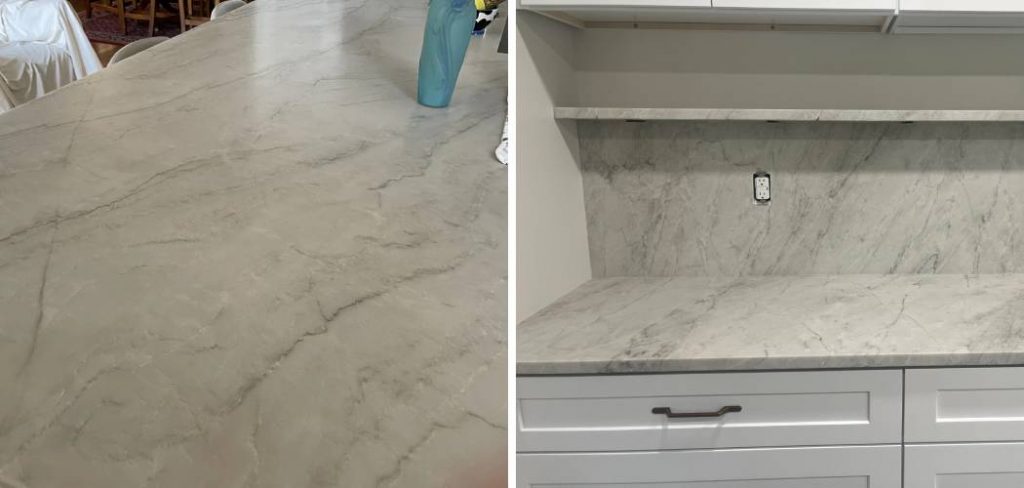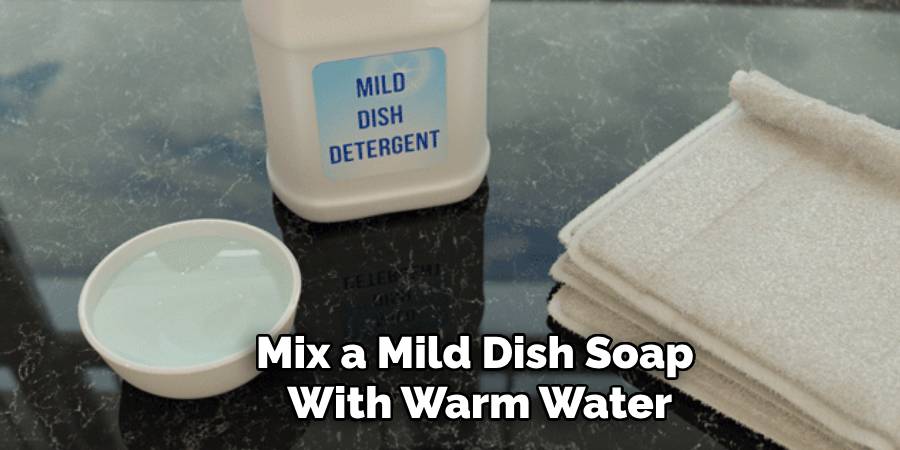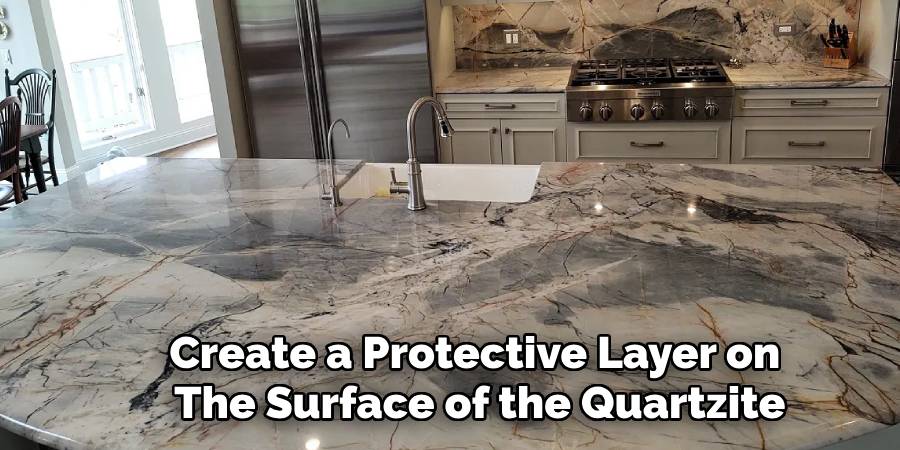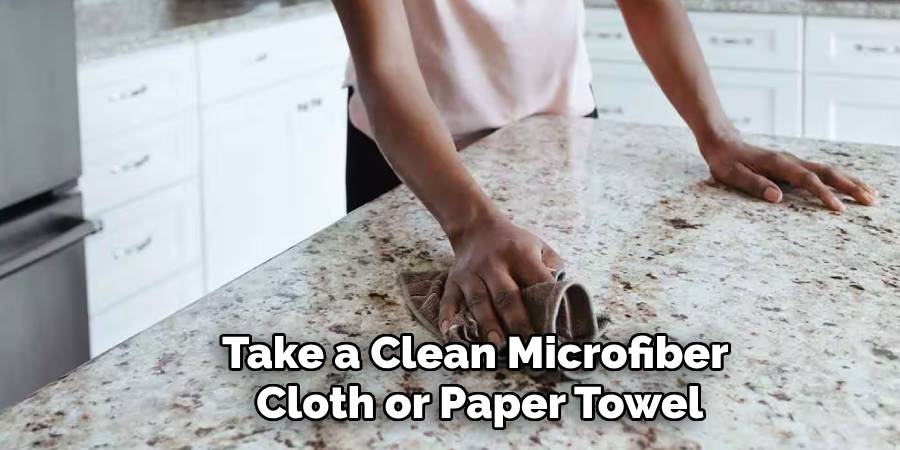Quartzite countertops are a popular choice for many homeowners due to their durability, natural beauty, and resistance to wear and tear. This striking natural stone is formed from sandstone under intense heat and pressure, creating a tough and visually appealing surface. Frequently used in kitchens and bathrooms, quartzite countertops are highly sought after for their ability to handle heavy daily use while maintaining their elegance.

However, despite its resilience against stains and scratches, quartzite still requires proper sealing to preserve its pristine look and extend its lifespan. Sealing provides protection against moisture, spills, and other substances that could potentially damage the surface over time.
This article will serve as a comprehensive step-by-step guide on how to seal a quartzite countertop, ensuring your investment remains stunning and durable for years to come.
Materials and Tools Needed
Before sealing your quartzite countertop, gathering all the necessary materials and tools is important to ensure a smooth and effective process. These items will save time and help deliver the best results.
Required Materials
- Quartzite countertop sealant (choose between penetrating or topical type based on your preference and the countertop’s needs).
- Microfiber cloths are used to clean and buff the surface.
- Painter’s tape (optional, for protecting the edges or adjacent surfaces).
- Protective gloves to safeguard your hands from potential irritants.
- Paper towels are used to dry the countertop and wipe off any excess sealant.
Tools You’ll Need
- Soft cloth or sponge for thorough cleaning of the surface prior to sealing.
- A clean, dry microfiber towel to buff the surface after applying the sealant.
- Drop cloths (if required, to protect surrounding floors and furniture while working).
- Masking tape to cover areas adjacent to the countertop, avoiding sealant application where it’s not intended.
With these materials and tools at the ready, you’ll be well-prepared to seal your quartzite countertop effectively, ensuring its beauty and durability for years to come.
Preparing the Quartzite Countertop for Sealing
Before applying sealant to your quartzite countertop, careful preparation of the surface is crucial for achieving optimal results. Follow these steps to ensure the surface is ready:
Step 1: Clean the Countertop Thoroughly

Mix a mild dish soap with warm water to create a gentle cleaning solution. Use a soft cloth or sponge to clean the countertop, ensuring that grease, dust, and any residue are fully removed. Avoid harsh chemicals or acidic cleaners, which can degrade or damage the quartzite. Pay special attention to heavily soiled areas to establish a clean, even surface for the sealant.
Step 2: Dry the Surface
Once the countertop has been cleaned, it’s essential to ensure that the surface is arid. Use a clean, dry microfiber cloth to thoroughly wipe down the countertop, eliminating any lingering moisture or water spots. This step is critical to avoid interference with the sealant’s adhesion and effectiveness.
Step 3: Test the Sealant
Before sealing the entire countertop, always test the sealant on a small, inconspicuous area. Apply a minimal amount of sealant and wait approximately 15 minutes to observe the results. Check to ensure the product doesn’t alter the quartzite’s color, sheen, or texture. If the sealant passes the test, proceed confidently to seal the entire surface.
By adhering to these preparation steps, you can ensure a smooth sealing process and protect the integrity and beauty of your quartzite countertop.
Choosing the Right Sealant for Quartzite
Selecting the proper sealant for your quartzite countertop is crucial to ensuring its durability and aesthetic appeal. Different types of sealants offer varying levels of protection and benefits, so understanding their properties will help you make the right choice for your needs.
Penetrating Sealants
Penetrating sealants are highly recommended for quartzite surfaces because they absorb into the stone rather than sitting on top of it. These sealants provide deep protection by preventing moisture, oils, and other contaminants from seeping into the stone’s pores. Additionally, they allow the stone to breathe, which is essential for maintaining quartzite’s natural structure and preventing damage over time. Penetrating sealants are particularly effective for resisting stains without altering the stone’s natural appearance.
Topical Sealants

Topical sealants, on the other hand, create a protective layer on the surface of the quartzite. This layer acts as a barrier, offering resistance to scratches, stains, and wear-and-tear. While these sealants can enhance the stone’s shine or polish, they may require more frequent reapplication to maintain their protective properties. Over time, this added maintenance cost should be considered when choosing such a product.
Factors to Consider When Choosing a Sealant
When selecting a sealant, it’s essential to use one specifically formulated for natural stone like quartzite. Additionally, consider the desired finish. Penetrating sealants tend to preserve the natural look of the stone, while some topical options may leave a matte or polished effect. Evaluate your countertop’s needs, maintenance preferences, and desired results to choose the sealant that best suits your environment.
How to Seal a Quartzite Countertop: Applying the Sealant to the Quartzite Countertop
Step 1: Apply the Sealant Evenly
Pour a small amount of the sealant onto a clean microfiber cloth or the countertop’s surface. Then, evenly spread the sealant across the quartzite using a circular motion. Be sure to cover the entirety of the surface to ensure comprehensive protection.
Step 2: Work in Small Sections
To achieve the best results, focus on working in small sections at a time. This prevents the sealant from drying out before it can be properly spread and absorbed. Allow the product to penetrate the stone for about 10 to 15 minutes. This time will vary depending on the manufacturer’s instructions, so always refer to the product label for specifics.
Step 3: Wipe off Excess Sealant
Once the sealant has been given adequate time to absorb, take a clean microfiber cloth or paper towel and thoroughly wipe off any excess product. This process is essential to prevent streaks or residue from forming on the quartzite surface. Gently buff the area until it achieves a smooth and even finish. Repeat the process for the entire countertop, ensuring consistent application and protection.

Allowing the Sealant to Cure
Step 1: Drying Time
Allow the countertop to sit for at least 24 hours after applying the sealant to ensure it cures completely. This drying period is crucial for the sealant to bond effectively with the quartzite surface, providing maximum protection. During this time, avoid placing any items on the countertop or using it for food preparation, as this can disturb the curing process. Ensure the area remains undisturbed to achieve the best results.
Step 2: Additional Coats (If Necessary)
For added protection, especially in high-traffic or heavily-used areas of your quartzite countertop, consider applying one or two additional coats of sealant. This measure ensures long-term durability and resistance to stains or scratches. Follow the same procedure as the initial application for each additional coat. Apply the sealant, allow it to absorb, wipe off any excess, and then let it cure for another 24 hours. Repeat the process to establish a robust protective layer, ensuring your quartzite surface retains its beauty and functionality over time.
Maintaining and Reapplying the Sealant
Proper maintenance of your quartzite countertop is essential to preserve its charm and durability. Here are the steps to ensure your countertop stays in excellent condition:
Step 1: Regular Cleaning
Clean the quartzite countertop regularly using a mild soap and water solution. This prevents dirt buildup and keeps the surface looking fresh and polished. Make sure to use a soft cloth or sponge for cleaning; avoid using abrasive pads or harsh chemicals, as these can strip away the sealant or damage the natural stone.
Step 2: Check for Wear and Tear
Periodically inspect the countertop for signs that the sealant might be wearing off. Indications can include dull areas, discoloration, or any noticeable staining. Pay attention to high-traffic areas like around sinks or heavily used prep zones, as these tend to wear down faster.
Step 3: Reapply Sealant
If you notice wear or suspect reduced stain resistance, reapply the sealant. Depending on the type of sealant and frequency of use, resealing may be necessary every 1-2 years. Follow the same procedure as the initial application to restore the protective layer, ensuring the countertop maintains its natural elegance and resilience for years to come.
Common Mistakes to Avoid When Sealing Quartzite
Using the Wrong Sealant
Using a sealant formulated specifically for quartzite or other natural stones is crucial. Using the wrong type can cause unwanted damage, such as discoloration or weakened protection, compromising the beauty and durability of your countertop.
Not Allowing Sufficient Drying Time
After applying a sealant, ensure each coat has enough time to cure thoroughly before using the countertop. Rushing this step can leave the surface vulnerable to staining or weaken the sealant’s protective properties. Be patient and follow the manufacturer’s recommended drying times.
Applying Too Much Sealant

Overapplying sealant can lead to sticky, uneven spots that are both unsightly and difficult to fix. Instead, opt for thin, even layers and buff off any excess. This approach creates a smooth, polished finish and enhances the longevity of the sealant.
Conclusion
Sealing quartzite countertops is essential to protect them from stains, moisture, and daily wear, preserving their natural beauty and durability. The process involves key steps such as thoroughly cleaning the surface, applying the correct sealant designed for quartzite, and allowing sufficient curing time. These measures ensure a flawless and long-lasting finish. Regular maintenance and timely resealing are also critical in maintaining your countertop’s elegant appearance. For more detailed guidance on maintaining your countertops, explore specific instructions on how to seal a quartzite countertop effectively and extend its lifespan.
Professional Focus
Angela Ervin, a former interior designer turned blogger, specializes in kitchen design and renovations. Through her website, she blends her passion for cooking with design expertise, sharing practical and creative ideas. Known for balancing functionality and beauty, Angela’s insightful content has made her a trusted voice in home design and lifestyle.
About the Author
Angela Ervin, an experienced interior designer and blogger, combines her passion for kitchen renovations with storytelling. Living in Petersburg with her family, she enjoys cooking and testing her projects firsthand. Known for her humor and relatable style, Angela shares creative, functional design insights through her content, making her a trusted voice in home design.
Education History
University: Virginia Commonwealth University
Degree: Bachelor of Fine Arts (BFA) in Interior Design
- Angela’s education at VCU focused on mastering core interior design principles, including spatial planning, color theory, materials selection, and sustainable design practices.
- She gained hands-on experience through studio projects and collaborative design exercises, which honed her ability to create functional and aesthetically pleasing environments.
- Her coursework also emphasized problem-solving and practical applications of design, preparing her for real-world projects like her self-directed kitchen renovations.
- The program’s strong foundation in both technical skills and creative expression shaped Angela’s ability to seamlessly integrate form and function in her work.
